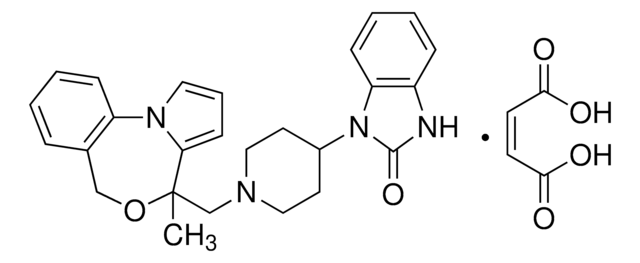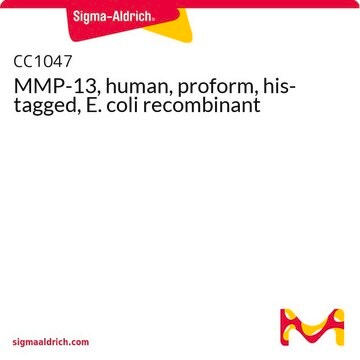SML0061
SAHA
≥98% (HPLC), powder, HDAC inhibitor
Sinónimos:
N-hydroxy-N′-phenyl-octanediamide, Suberoylanilide hydroxamic acid, Vorinostat
About This Item
Productos recomendados
product name
SAHA, ≥98% (HPLC)
assay
≥98% (HPLC)
form
powder
color
white to tan
solubility
DMSO: ≥15 mg/mL
shipped in
wet ice
storage temp.
−20°C
SMILES string
ONC(=O)CCCCCCC(=O)Nc1ccccc1
InChI
1S/C14H20N2O3/c17-13(15-12-8-4-3-5-9-12)10-6-1-2-7-11-14(18)16-19/h3-5,8-9,19H,1-2,6-7,10-11H2,(H,15,17)(H,16,18)
InChI key
WAEXFXRVDQXREF-UHFFFAOYSA-N
Gene Information
human ... HDAC1(3065) , HDAC2(3066) , HDAC3(8841) , HDAC6(10013)
¿Está buscando productos similares? Visita Guía de comparación de productos
Application
Biochem/physiol Actions
Features and Benefits
signalword
Danger
hcodes
Hazard Classifications
Muta. 2 - Repr. 1A
Storage Class
6.1C - Combustible acute toxic Cat.3 / toxic compounds or compounds which causing chronic effects
wgk_germany
WGK 3
flash_point_f
Not applicable
flash_point_c
Not applicable
Certificados de análisis (COA)
Busque Certificados de análisis (COA) introduciendo el número de lote del producto. Los números de lote se encuentran en la etiqueta del producto después de las palabras «Lot» o «Batch»
¿Ya tiene este producto?
Encuentre la documentación para los productos que ha comprado recientemente en la Biblioteca de documentos.
Los clientes también vieron
Artículos
We presents an article on Autophagy in Cancer Promotes Therapeutic Resistance
We offer a variety of small molecule research tools, such as transcription factor modulators, inhibitors of chromatin modifying enzymes, and agonists/antagonists for target identification and validation in gene regulation research; a selection of these research tools is shown below.
Nuestro equipo de científicos tiene experiencia en todas las áreas de investigación: Ciencias de la vida, Ciencia de los materiales, Síntesis química, Cromatografía, Analítica y muchas otras.
Póngase en contacto con el Servicio técnico












